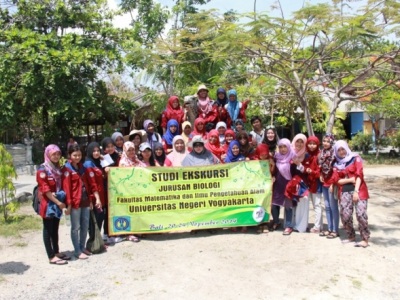THE YSU BIOLOGY STUDENTS CONDUCTED AN EXCURSION TO THE TURTLE CONSERVATION AREA AT SARANGAN ISLAND
9
Jan
2015

Seniors students of Biology Study Program joined an excursion program for turtleconservation at Turtle Education and Conservation Center (TCEC) in Serangan, Denpasar, Bali. TCEC is a conservation area initiated by several environmental conservation activists in Bali, WWf, and Bali Provincial Government.
According to Dian Rakhmawati, one of the participants, the turtle eggs hatched in Serangan island came from various regions including Jember, Banyuwangi, and Alas Purwo. They were bought from Meru Betiri (Sukamade beach) in December and it costed Rp. 50.000,00 per egg. A turtle is able to spawn 100 eggs once. Those eggs will be incubated for 50 days before hatching.
During the process, the eggs will be placed in an artificial place resembling to their original habitat and covered with sand. There will be a net wire as well as a sign to protect them so that hatchlings will not mix with the other eggs. “There are up to 10—20 hatchlings released to the sea through an adoption program done by the tourists. They have to pay 10 dollars for each hatchling they adopt. There are 6000—7000 hatchlings released to the sea per year,” said Dian.
A turtle is considered ready to spawn starting from 12 to 15 years old. Once spawning, usually between April and August, it will produce 100—300 eggs.
There are three types of turtle at Sarangan Island, namely Green Turtle (Chelonia Mydas), Hawksbill Turtle (Eretmochelys imbricata), and Oliveridley Turtle (Lepidochelys Olivacea) which are morphologically different from one another. They can be distinguished from their colours and shell patterns.
The hatching process is influenced by several factors namely temperature, relocation process, and predators. Whether hatchlings are male or female depends on the temperature where they are in the nest, known as the “pivotal temperature." The temperature, normally ranges from 30 to 38°C. Male hatchlings will come out from eggs hatched under 30°C in 60—70 days. In breeding areas, hatchlings have only 40—60% chance for life, whereas in their natural habitat, they have around 80% chance for life. (witono)

